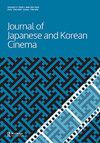光州和布宜诺斯艾利斯之间的全球团结:光线好,空气好(2021)
引用次数: 0
摘要
摘要本文考察了纪录片《好光,好空气》(Joheun Bit Joheun Gonggi,导演Im Heung-soon,2021),该片讲述了韩国光州和阿根廷布宜诺斯艾利斯发生的两起不同的大屠杀。这部电影聚焦于那些目睹过国家暴力并从中幸存下来的人,并探讨了它对过去的处理如何加速历史化的替代形式。这部电影采用了一种独特的档案方法来获取、分类和保存反对国家暴力的起义留下的材料,同时促进社会知识的产生,重新定义已知和可知。《好光,好空气》汇集了两个城市对创伤事件的反应,借鉴了电影策略,如将静止(摄影)和运动(运动图像)并置,以及电影制作人Im用来“转录”受访者描述的模仿方法。在这样做的过程中,它提出了基于反对国家暴力的历史斗争的促进全球团结的战略,同时探索受创伤的个人历史和共同的创伤事件。本文章由计算机程序翻译,如有差异,请以英文原文为准。
Global solidarity between Gwangju and Buenos Aires: Good Light, Good Air (2021)
ABSTRACT This paper examines the documentary Good Light, Good Air (Joheun Bit Joheun Gonggi, dir. Im Heung-soon, 2021), which deals with two different massacres in Gwangju, South Korea and Buenos Aires, Argentina. The film focuses on people who have both witnessed and survived state violence, and examines how its treatment of the past accelerates alternative forms of historicizing. The film employs a unique archival approach to acquire, classify, and preserve the materials left behind by the uprisings against state violence while fostering the production of social knowledge that redefines what is known and what is knowable. Good Light, Good Air brings together two cities’ responses to traumatic events, drawing on cinematic strategies, such as juxtaposing stillness (photography) and motion (moving image), and mimetic methods that filmmaker Im uses to ‘transcribe’ what the interviewees are describing. In so doing, it suggests strategies for promoting global solidarity that are based on historical struggles against state violence by simultaneously exploring both traumatized personal histories and shared traumatic events.
求助全文
通过发布文献求助,成功后即可免费获取论文全文。
去求助
来源期刊

Journal of Japanese and Korean Cinema
Arts and Humanities-Visual Arts and Performing Arts
CiteScore
0.60
自引率
0.00%
发文量
16
期刊介绍:
Journal of Japanese and Korean Cinema is a fully refereed forum for the dissemination of scholarly work devoted to the cinemas of Japan and Korea and the interactions and relations between them. The increasingly transnational status of Japanese and Korean cinema underlines the need to deepen our understanding of this ever more globalized film-making region. Journal of Japanese and Korean Cinema is a peer-reviewed journal. The peer review process is double blind. Detailed Instructions for Authors can be found here.
 求助内容:
求助内容: 应助结果提醒方式:
应助结果提醒方式:


